Reddit Scraper Code using Python & Reddit API
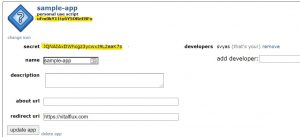
In this post, you will get Python code sample using which you can search Reddit for specific subreddit posts including hot posts. Reddit API is used in the Python code. This code will be helpful if you quickly want to scrape Reddit for popular posts in the field of machine learning (subreddit – r/machinelearning), data science (subreddit – r/datascience), deep learning (subreddit – r/deeplearning) etc. There will be two steps to be followed to scrape Reddit for popular posts in any specific subreddits. Python code for authentication and authorization Python code for retrieving the popular posts Check the Reddit API documentation page to learn about Reddit APIs. Python code for …
Mining Twitter Data – Python Code Example
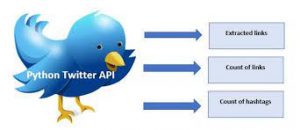
In this post, you will learn about how to get started with mining Twitter data. This will be very helpful if you would like to build machine learning models based on NLP techniques. The Python source code used in this post is worked out using Jupyter notebook. The following are key aspects of getting started with Python Twitter APIs. Set up Twitter dev app and Python Twitter package Establish connection with Twitter Twitter API example – location-based trends, user timeline, etc Search twitter by hashtags Setup Twitter Dev App & Python Twitter Package In this section, you will learn about the following two key aspects before you get started with …
Spend Analytics – 5 Ws of Spend Analysis
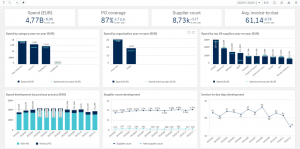
In this post, you will learn about 5 Ws of spend analytics. In case you are a procurement professional looking to understand use cases related to spend analytics, you may find this post to be very useful. In simple words, spend analytics is about extracting insights from spend in different procurement categories. What are we spending on? First and foremost, it is important to get visibility on what items are we spending on. This can be achieved using a dashboard. This form of analytics is also called descriptive analytics. Analyzing item spends can be termed as Item spend analytics. The items can be related to direct or indirect procurement. Indirect …
Python Scraper Code to Search Arxiv Latest Papers
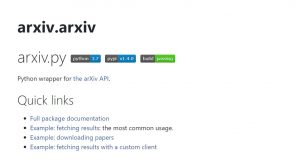
In this post, you will learn about Python source code related to search Arxiv for relevant and latest machine learning and data science research papers. If you are looking for a faster way to research on Arxiv papers without really going to the Arxiv website, you may want to get this piece of code in your kitty. You can further automate the Arxiv search to get notified based on some logic. Without further ado, let’s get started. Step 1: Install Python Arxiv Library As a first step, install the Python Arxiv library using the code such as below in your Jupyter notebook or Google colab instance: Step 2: Execute the …
Google News Search Python API Example

In this post, you will learn about how to use GoogleNews search Python library to get or retrieve or scrape news from Google News for last N number of days. This would be very helpful for someone wanting to track new work / projects in relation to machine learning, data science, deep learning or any field including sports, politics etc. Without further ado, lets jump in right away. You can log into Google colab and practise the code. Step 1: First and foremost, lets install GoogleNews python library. Step 2: Instantiate GoogleNews object. One can pass the language and period to instantiate the object. The parameter, period, represents the news …
Python – How to Create Dictionary using Pandas Series
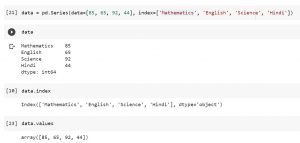
In this post, you will learn about one of the important Pandas fundamental data structure namely Series and how it can be used as a dictionary. It will be useful for beginner data scientist to understand the concept of Pandas Series object. A dictionary is a structure that maps arbitrary keys to a set of arbitrary values. Pandas Series is a one-dimensional array of indexed data. It can be created using a list or an array. Pandas Series can be thought of as a special case of Python dictionary. It is a structure which maps typed keys to a set of typed values. Here are the three different ways in …
Free Online Books – Machine Learning with Python
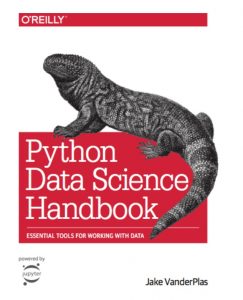
This post lists down free online books for machine learning with Python. These books covers topiccs related to machine learning, deep learning, and NLP. This post will be updated from time to time as I discover more books. Here are the titles of these books: Python data science handbook Building machine learning systems with Python Deep learning with Python Natural language processing with Python Think Bayes Scikit-learn tutorial – statistical learning for scientific data processing Python Data Science Handbook Covers topics such as some of the following: Introduction to Numpy Data manipulation with Pandas Visualization with Matplotlib Machine learning topics (Linear regression, SVM, random forest, principal component analysis, K-means clustering, Gaussian …
Great Site for Matrix Multiplication Demo
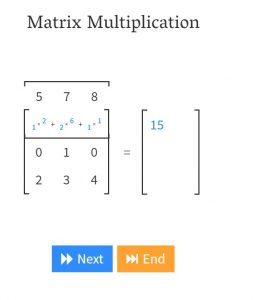
Here is a great website for the matrix multiplication demo. If you are a beginner data scientist, you will love this. http://matrixmultiplication.xyz/ Here is how the website looks like. It has just one page. It actually shows how multiplication happens given the different dimensions of the matrix. Here are few other websites for understanding matrix multiplication concepts: https://www.mathsisfun.com/algebra/matrix-multiplying.html Khan Academy – Matrix multiplication
Different types of Machine Learning Problems
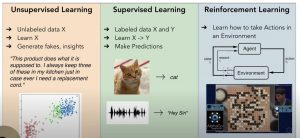
This post describes the most popular types of machine learning problems using multiple different images/pictures. The following represent various different types of machine learning problems: Supervised learning Unsupervised learning Reinforcement learning Transfer learning Imitation learning Meta-learning In this post, the image shows supervised, unsupervised, and reinforcement learning. You may want to check the explanation on this Youtube lecture video. Unsupervised Learning Problems In unsupervised learning problems, the learning algorithm learns about the structure of data from the given data set and generates fakes or insights. In the above diagram, you may see that what is given is the unlabeled dataset X. The unsupervised learning algorithm learns the structure of data …
Top 10+ Youtube AI / Machine Learning Courses

In this post, you get access to top Youtube free AI/machine learning courses. The courses are suitable for data scientists at all levels and cover the following areas of machine learning: Machine learning Deep learning Natural language processing (NLP) Reinforcement learning Here are the details of the free machine learning / deep learning Youtube courses. S.No Title Description Type 1 CS229: Machine Learning (Stanford) Machine learning lectures by Andrew NG; In case you are a beginner, these lectures are highly recommended Machine learning 2 Applied machine learning (Cornell Tech CS 5787) Covers all of the most important ML algorithms and how to apply them in practice. Includes 3 full lectures …
Scikit-learn vs Tensorflow – When to use What?
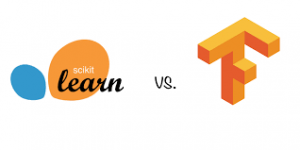
In this post, you will learn about when to use Scikit-learn vs Tensorflow. For data scientists/machine learning enthusiasts, it is very important to understand the difference such that they could use these libraries appropriately while working on different business use cases. When to use Scikit-learn? Scikit-learn is a great entry point for beginners data scientists. It provides an efficient implementation of many machine learning algorithms. In addition, it is very simple and easy to use. You can get started with Scikit-learn in a very easy manner by using Jupyter notebook. Scikit-learn can be used to solve different kinds of machine learning problems including some of the following: Classification (SVM, nearest neighbors, random …
Machine Learning – Training, Validation & Test Data Set
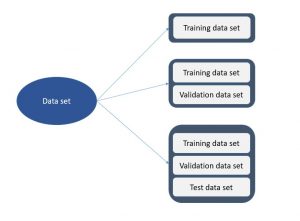
In this post, you will learn about the concepts of training, validation, and test data sets used for training machine learning models. The post is most suitable for data science beginners or those who would like to get clarity and a good understanding of training, validation, and test data sets concepts. The following topics will be covered: Data split – training, validation, and test data set Different model performance based on different data splits Data Splits – Training, Validation & Test Data Sets You can split data into the following different sets and each data split configuration will have machine learning models having different performance: Training data set: When you …
Why use Random Seed in Machine Learning?
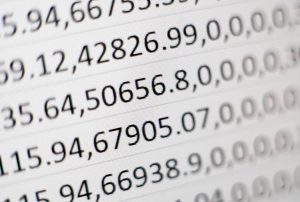
In this post, you will learn about why and when do we use random seed values while training machine learning models. This is a question most likely asked by beginners data scientist/machine learning enthusiasts. We use random seed value while creating training and test data set. The goal is to make sure we get the same training and validation data set while we use different hyperparameters or machine learning algorithms in order to assess the performance of different models. This is where the random seed value comes into the picture. Different Python libraries such as scikit-learn etc have different ways of assigning random seeds. While training machine learning models using Scikit-learn, …
Deep Learning – Top 5 Online Jupyter Notebooks Servers

In this post, you will get information regarding the online Jupyter notebooks platform (GPU-based) which you can use to get started with both, machine learning and deep learning. The list consists of both freely available and paid options of online Jupyter notebook available with GPUs. When starting with GPUs, it is recommended to use rented options available online rather than buying your own GPU servers. There are online GPU Linux servers available (free and paid options) that can be used to train deep learning & machine learning models. I will be writing about it in my next post. Here is the list of Jupyter notebook platforms that could be used …
Top Deep Learning Myths You should know
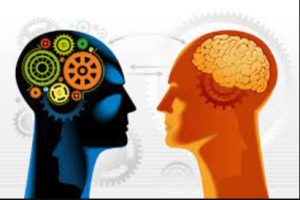
This post highlights the top deep learning myths you should know. This is important to understand in order to leverage deep learning to solve complex AI problems. Many times, beginner to intermediate level machine learning enthusiasts don’t consider deep learning based on the myths discussed in this post. Without further ado, let’s look at the topmost and most common deep learning myths: Good understanding of complex mathematical concepts: Well, that is just a myth. At times, they say that one needs to have a higher degree in Mathematics & statistics. That is not true. With tools and programming languages along with libraries available today, basic mathematical concepts should be able …
First Principles Understanding based on Physics
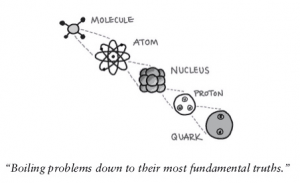
In this post, you will understand the concepts of first principles and first principles thinking based on physics concepts. Let’s jump in right away. In the meanwhile, you could also access one of my other posts on the first principles: First-principles thinking explained with examples. It will help you get started on what are first principles and what is first principle thinking. One of the most fundamental Physics concept to understand the first principle is this: Every physical quantity can be represented as the derived quantity or fundamental quantity. The fundamental quantities, also termed basic quantity, are most basic or fundamental and unique and there are no overlaps between them. …
I found it very helpful. However the differences are not too understandable for me